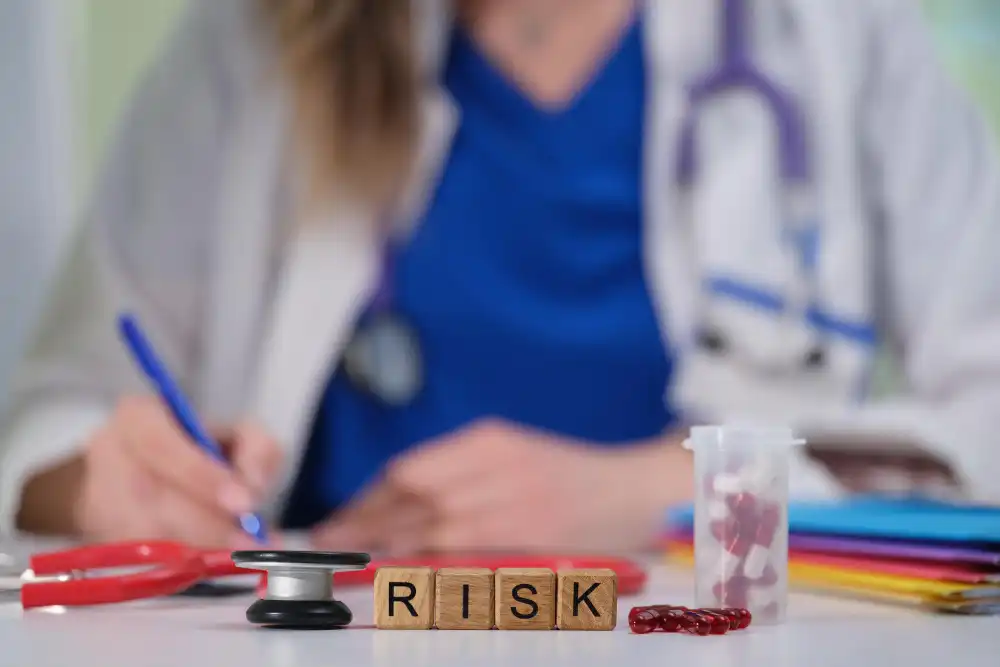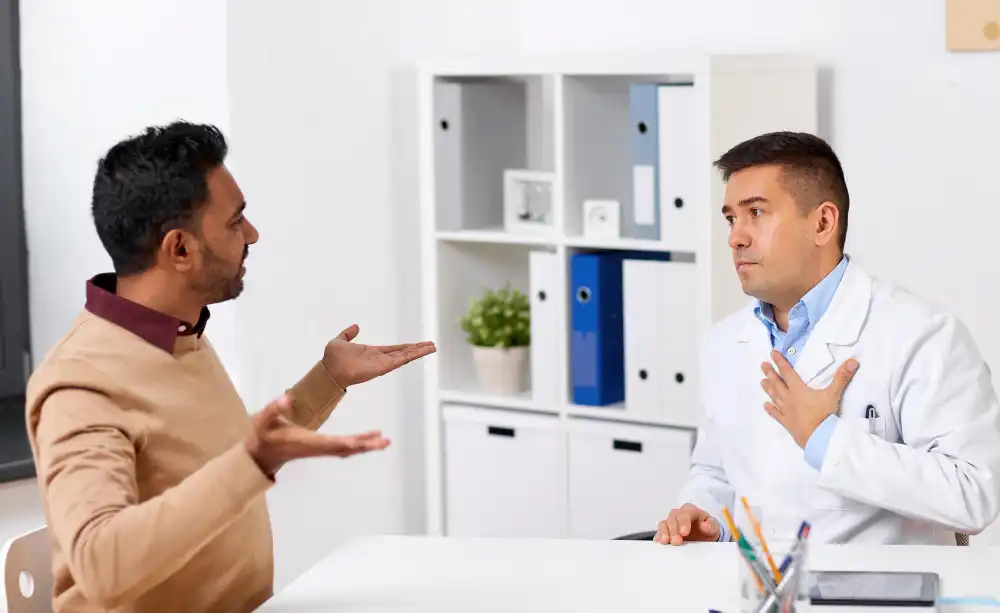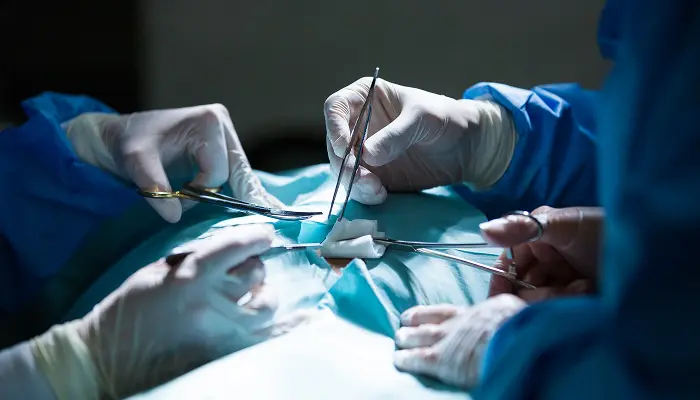Causes & Risk Factors of Varicose Veins
What Causes Varicose Veins?
Varicose veins develop when the valves inside your leg veins weaken or get damaged. Normally, these valves help blood flow upward toward the heart. When they fail, blood pools in the veins, causing them to enlarge, twist, and become visible under the skin.
Weak or damaged vein valves
leading to backward blood flow (venous reflux)
Increased pressure in leg veins
From prolonged standing or sitting
Obstruction in blood flow
sometimes linked to deep vein issues

Common Risk Factors
You are more likely to develop varicose veins if you have:
- Family history – genetics play a strong role
- Age – risk increases as veins lose elasticity over time
- Gender – women are more prone due to hormonal changes during pregnancy, menopause, or contraceptive use
- Pregnancy – extra weight and pressure on leg veins can trigger varicose veins
- Obesity – excess body weight increases pressure on veins
- Occupation – jobs that involve long hours of standing (teachers, nurses, surgeons, etc.) or sitting (IT professionals, drivers)
- Lack of activity – sedentary lifestyle reduces circulation
Varicose Vein Treatment Options in Bangalore
At our clinic, we provide a range of advanced, minimally invasive treatments tailored to each patient’s condition. The right option depends on the size of veins, severity of symptoms, and lifestyle needs.
1. Endovenous Laser Treatment (EVLT)
- Uses laser energy inside the vein to seal it shut.
- Gold standard with long-term proven results.
- Minimally invasive, scar-free, quick recovery.
- Walk the same day, resume work in 2–3 days.
- Uses a medical adhesive (glue) to seal the vein.
- No heat, no anesthesia injections along the vein.
- No stockings needed in most cases.
- Virtually painless, immediate recovery.
- Slightly higher cost, less long-term data compared to EVLT.
2. Glue Treatment (Venaseal™ Closure System)
- Best for small varicose veins & spider veins.
- A special solution is injected into the vein, causing it to shrink and fade.
- Outpatient, no anesthesia required.
- Quick and cosmetic-focused.
- May need multiple sessions.
3. Sclerotherapy
- Reserved for very large or complicated varicose veins.
- Effective for advanced cases with ulcers or severe vein enlargement.
- Requires anesthesia and slightly longer recovery.
4. Surgical Options (Stripping/Phlebectomy)

Which Treatment is Right for You?
- Mild/Spider Veins → Sclerotherapy or Laser
- Moderate to Large Veins → EVLT (most common choice)
- Needle-free/No heat option → Glue Treatment
- Advanced/Complicated Cases → Surgery
Takeaway
With modern techniques like Laser (EVLT) and Glue Therapy, treating varicose veins is safe, painless, and highly effective.
Our specialist will recommend the best option tailored to your condition after a detailed evaluation.
Treatment Type
Sclerotherapy
EVLT (Laser) – 1 Leg
EVLT – Both Legs
Glue (VenaSeal) – 1 Leg
Glue (VenaSeal) – Both Legs
RFA
Traditional Surgery (Stripping)
Open Surgery – 1 Leg
Typical Price Range (₹)
10,000 – 40,000
55,000 – 1,20,000
1,25,000 – 1,60,000
80,000 – 1,05,000
1,95,000
40,000 – 1,00,000
30,000 – 80,000
75,000 – 85,000
Quick Cost Table – Bangalore Treatments

Factors Influencing Cost
- Number of legs treated (unilateral vs. bilateral)
- Type of procedure (minimally invasive vs. surgery)
- Hospital/clinic infrastructure and reputation
- Doctor’s experience and consultation fees
- Diagnostics (e.g., Doppler ultrasound), anesthesia, medications, follow-ups
- Insurance coverage (many plans cover symptomatic varicose treatments) Pristyn CarePractoMedfin

Patient-Friendly Summary
- Sclerotherapy is the most affordable, ideal for small veins.
- EVLT offers long-term results and costs between ₹55k–₹120k for one leg.
- Glue (VenaSeal) enables a heat-free, comfortable option priced around ₹80k–₹2 lakh depending on number of legs.
- RFA and surgical stripping are other options, priced moderately.
Most treatments are covered by insurance if clinically necessary. Your vascular specialist in Bangalore can provide an exact estimate based on your specific situation.
[Book a Consultation] to get personalized pricing and a treatment plan that fits both your medical needs and budget
FAQs
1. Are varicose veins dangerous?
Most varicose veins are not life-threatening, but they can cause pain, swelling, and skin damage if untreated. In advanced cases, they may lead to ulcers or blood clots. That’s why early treatment is recommended.
2. Is laser treatment painful?
No. Endovenous laser treatment (EVLT) is virtually painless. It is done under local anesthesia, and patients usually feel only mild warmth during the procedure.
3. How long does recovery take after laser treatment?
Most patients can walk immediately after the procedure and resume daily activities within 2–3 days. Compared to traditional surgery, recovery is much faster.
4. Will varicose veins come back after treatment?
Laser treatment effectively closes the diseased vein. While new varicose veins can develop in the future due to underlying risk factors, recurrence in the same vein is rare.
5. Is the procedure covered by insurance?
Yes. In most cases where varicose veins cause symptoms (pain, swelling, ulcers), insurance covers the treatment. Cosmetic treatment for spider veins may not be covered.
6. How do I know if I need treatment?
If you have persistent leg pain, swelling, visible bulging veins, or skin changes, you should see a specialist. Early consultation helps prevent complications.
7. Can I prevent varicose veins?
While you can’t change factors like genetics or age, you can reduce risks by:
- Regular exercise
- Maintaining a healthy weight
- Avoiding prolonged standing or sitting
- Wearing compression stockings when recommended
